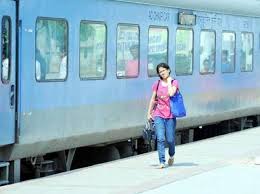
Indian Railways has asked NIFT (National Institute of Fashion technology) to redesign the blankets that it provides to passengers in AC coaches. The move is part of several measures that the Suresh Prabhu-led Indian Railways says it is taking to maintain standards of hygiene in the linen and blankets used in trains.
The steps assume significance in the backdrop of the recent CAG (Comptroller and Auditor General) report that sharply rapped Indian Railways over the cleanliness standards of blankets and linen. Talking about the plans, Anil Saxena, Spokesperson of Ministry of Railways told FE Online, “We are taking several steps to make sure that the blankets that are given to passengers are clean and sanitised. We have asked NIFT to redesign the blankets so that the material used is easily washable. NIFT has also been asked to reduce the overall size of the blanket since currently, it tends to touch the train floor – hence accumulating dirt fast.”
Asked whether reports of Indian Railways doing away with blankets in AC-1st class coaches are true, Saxena said, “The proposal is under consideration. There is a thought process that if the average temperature in AC-1st class coaches is increased from 19 degree to 24 degree, then the need for blankets won’t arise. However, nothing has been finalised yet.” According to Saxena, Indian Railways has already started providing covers with blankets for AC-1st class coaches. “This will be complete for all trains soon. These covers will help maintain hygiene. But, the number of blankets in AC-2 tier and AC-3 tier coaches is very high, for that we are considering washing them every 15 days and sanitizing them as frequently as possible,” Saxena elaborated.
Meanwhile, there are plans to increase the number of mechanised laundries across the country. “Presently 55% of the total linen of Indian Railways is washed in mechanised laundries. Passengers don’t complain of linen that is washed in mechanised laundries. The – ones are not as clean. By March 2018, we plan to take this percentage up to 70%,” Saxena added.
CAG, in a report tabled in the Parliament recently, has come down heavily on Indian Railways saying that the washing and sanitation of linen and blankets are not done as per Railways norms. The audit report has also highlighted the need to increase the pace of setting up of mechanised laundries and prescribe norms for quality standards for washed linen, reported PTI. A report by CAG has also called food in Indian Railways “unfit for human consumption”.
Indian Railways is the national carrier – a fact that makes it even more important that it maintains cleanliness and provides better passenger amenities. Even as it focuses on introducing new trains such as Tejas and Humsafar that enhance passenger comfort and experience, it should look to improve its service standards at all levels in the existing trains as well. Passengers would be a lot more willing to pay a premium for clean linen, blankets and hygienic food if they are sure of the quality and standards being maintained.







